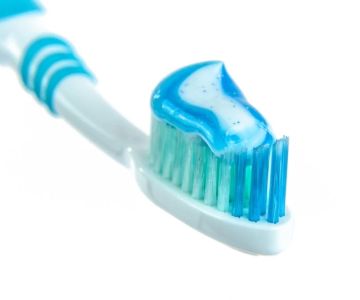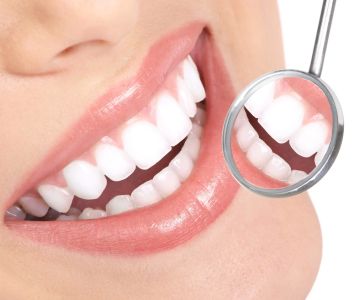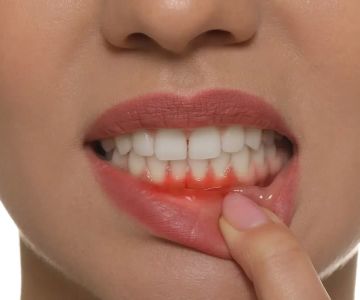What are the Early Signs of Gum Problems That Should Be Recognized?
Healthy gums form the cornerstone of a bright smile and robust oral health. However, gum problems can quietly sneak up, leading to significant issues if left unaddressed. Recognizing the early signs of gum disease is crucial for preventing more severe problems in the future. In the United States, where dental visits are frequent but often reactive rather than proactive, understanding these signs can empower individuals to maintain healthier teeth and gums. By familiarizing yourself with the initial indicators of gum problems, you can take timely action and ensure your smile remains both beautiful and healthy.
Swelling and Redness: The Initial Warnings
The earliest and most noticeable indicators of gum issues often begin with inflammation and discoloration. Swelling and redness are classic early signs that the gums are under stress, possibly due to plaque buildup along the gum line. According to the American Dental Association, these symptoms might initially seem mild but can quickly escalate if not managed properly. Clinically, this stage is often referred to as gingivitis, which involves the gums appearing more red or darker than their usual pink shade. It’s a sign that professional dental cleaning might be necessary. Moreover, early intervention during this proactive stage can prevent the advancement to more serious forms of gum disease.
Bleeding Gums: Not Always Innocuous
A common misconception is that gums bleeding during brushing or flossing is normal; however, it often signifies potential gum issues. Bleeding gums might indicate the presence of an infection or inflammation. The Centers for Disease Control and Prevention highlights that regular bleeding occurrences could be a call for immediate dental attention. This condition can disrupt daily oral hygiene routines if ignored, potentially exacerbating plaque accumulation and increasing the risk of periodontitis. In many cases, the remedy lies in improved oral care practices and addressing nutritional deficiencies that might impair gum health.
Receding Gums: A Gradual Threat
Gum recession is primarily an indicator of underlying gum problems that may go unnoticed until significant damage has occurred. It involves the gums pulling back from the teeth, leading to exposed roots which increase sensitivity and susceptibility to decay. This recession can occur due to several factors, including aggressive brushing, smoking, or even genetic predispositions. The National Institute of Dental and Craniofacial Research suggests regular dental check-ups to assess gum health proactively. Prevention strategies might include using softer toothbrushes, proper brushing techniques, and cessation of smoking.
Persistent Bad Breath: A Cry for Help
Bad breath, medically referred to as halitosis, can also be a significant indicator of underlying gum problems. It is often caused by bacteria present in the mouth due to poor oral hygiene, including failing gums that create pockets where bacteria thrive. The persistence of bad breath should prompt consultation with dental professionals at Dentistry Toothtruth for a detailed examination and treatment. Incorporating targeted cleaning methods, such as tongue scrapers, and increasing hydration can alleviate some symptoms, but addressing the root cause is essential for a lasting solution.
Tooth Sensitivity: A Symptom of Deeper Issues
Sensitivity to hot and cold can be more than just a minor inconvenience. It may indicate that the protective gum line is compromised, opening pathways for germs and heat/cold indicators to reach sensitive spots of the teeth. According to research in American Family Physician, tooth sensitivity often follows receding gums and can serve as an early sign of periodontal disease potential. Managing this involves more than desensitizing toothpaste; it requires addressing gum health and understanding what might be causing gum tissue to weaken or disappear.
In conclusion, early detection of gum problems can significantly reduce the risk of developing serious dental conditions. Recognizing symptoms such as swelling, redness, bleeding, recession, persistent bad breath, and sensitivity can lead to early intervention and treatment that prevents progression to more severe stages of gum disease. Regular visits to dental experts, such as those at Dentistry Toothtruth, along with diligent oral hygiene practices, create a strong defense against periodontal issues. It is crucial for individuals to act promptly when these symptoms arise, ensuring that their dental health is preserved and supported for the long term.







 Dayspring Pediatric Dentistry4.0 (34 review)
Dayspring Pediatric Dentistry4.0 (34 review) North Carolina Oral Surgery + Orthodontics - Cary Tryon4.0 (71 review)
North Carolina Oral Surgery + Orthodontics - Cary Tryon4.0 (71 review) Somos Dental & Orthodontics - Avondale4.0 (443 review)
Somos Dental & Orthodontics - Avondale4.0 (443 review) Vanident4.0 (126 review)
Vanident4.0 (126 review) New York Total Dental5.0 (85 review)
New York Total Dental5.0 (85 review) CJ Dental4.0 (13 review)
CJ Dental4.0 (13 review) The Importance of Oral Health Education During Pregnancy for a Healthy Pregnancy
The Importance of Oral Health Education During Pregnancy for a Healthy Pregnancy Best Tips for Brushing Your Teeth Properly for Healthy Gums: Essential Techniques for Oral Health
Best Tips for Brushing Your Teeth Properly for Healthy Gums: Essential Techniques for Oral Health Why Skipping Dental Checkups Can Lead to Bigger Oral Health Problems
Why Skipping Dental Checkups Can Lead to Bigger Oral Health Problems Advantages of Porcelain Dental Restorations
Advantages of Porcelain Dental Restorations How Can Diabetes Cause Tooth and Gum Problems? Preventing and Managing Oral Health Issues
How Can Diabetes Cause Tooth and Gum Problems? Preventing and Managing Oral Health Issues Healthy Habits for Promoting Good Oral Health and Hygiene: Tips for a Healthy Smile
Healthy Habits for Promoting Good Oral Health and Hygiene: Tips for a Healthy Smile